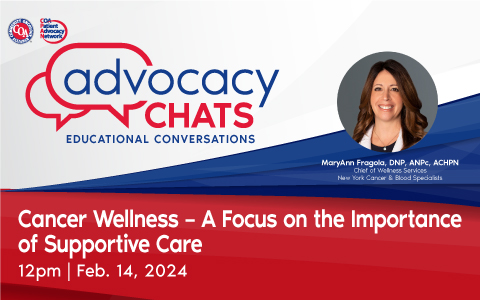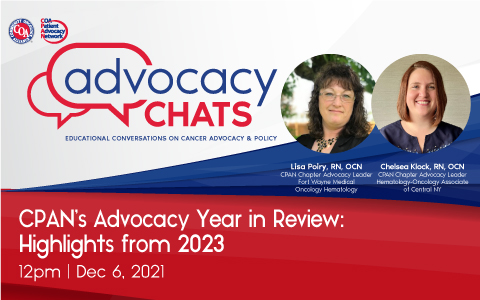What to Know About Open Enrollment Date & Time
Health Insurance Open Enrollment: What to Know
The Community Oncology Alliance (COA) and its member physicians are involved in all aspects of cancer care for their patients. This includes explaining insurance plan options that help patients pay for their cancer care. October to December is known as the open enrollment period for health insurance. This is when individuals can choose a new health plan or change their current plan. For patients with cancer, understanding how the cost of cancer care is covered and how coverage is calculated is key. In anticipation of this year’s open enrollment period, the September Advocacy Chat covered the common types of coverage, how to navigate the insurance marketplace, and what type of coverage is best for each patient.
Joining COA’s Rose Gerber, MS, director of patient advocacy and education, for this important conversation was Kathy Oubre, MS, chief executive officer of Pontchartrain Cancer Center in Louisiana. They shared their experience counseling patients on what to look for in an appropriate plan and how to overcome the typical challenges encountered during the sign-up process.
Open Enrollment – When Is It?
Every year, most people have the ability to make changes to their health insurance coverage, whether through Medicare, the marketplace, or an employer. These changes are made during what is called “open enrollment.” Depending on the type of coverage, open enrollment periods may differ.
Employer Plans
Each employer has their own open enrollment period, but they often occur in the fall. Employers are required to notify employees when the open enrollment period is. Sometimes an employer offers more than one plan, and employees can switch plans during open enrollment. The best source of information about dates, options, and additional information is usually the person who handles the company’s health insurance.
Medicaid Plans
Applications are accepted year-round.
ACA Marketplace Plans
Nov. 1 Open enrollment starts
Dec. 15 Last day to enroll for coverage that starts on January 1, 2024
Jan. 15 Last day to enroll for 2024 coverage
Because dates may vary by state, patients can check the open enrollment dates for their state at https://www.healthcare.gov/quick-guide/dates-and-deadlines/.
Medicare Plans
Open enrollment is from October 15 to December 7. Information on 2024 insurance plans starts becoming available in late September. For Medicare plan information or to compare plans, call 1-800-MEDICARE or go to https://www.medicare.gov/.

Types of Plans
Fee for Service Plans
In a fee for service plan (FFS), a health care provider is paid a fee for each service provided. With these plans, patients can go to any provider willing to accept that plan. The patient pays for a portion of the care, and the insurer pays the rest.
Managed Care Plans
In these plans, health care providers contract with a health insurance company to be part of its network. There is more than one kind of managed care plan.
Health Maintenance Organizations (HMOs)
In this kind of plan, health care services start with the primary care physician, and the patient will usually need a referral before seeing any other health care provider. Generally, HMOs have smaller networks or provider groups, and providers outside of this network are not covered by the HMO.
Preferred Provider Organizations (PPOs)
Generally, these plans do not start with the primary care physician. While most PPOs allow some out-of-network coverage, staying in-network is less expensive.
Insurance Terms
There are terms patients should know when making a plan selection. It is important to know the language used to describe the “rules.” The most important and most frequently used terms are:
Monthly premium
What the patient pays each month to have insurance coverage.
Annual deductible
The amount paid out-of-pocket each year before your insurer starts paying.
Copayment
A fixed dollar amount paid each time the patient receives medical care. For example, a patient may pay a $20 copay to see his primary care physician and $40 to see a specialist.
Coinsurance
A percentage difference between what the insurer pays for a patient’s medical expenses and what the patient pays. For example, in Medicare Part B (this includes doctor’s office visits and chemotherapy), there is an 80/20 split. Medicare pays 80 percent of the cost of care, and the patient’s coinsurance share is 20 percent.
Out-of-pocket maximum
A fixed dollar amount that is the most a patient will pay for medical expenses during a calendar year.
The Parts of Medicare
Medicare groups the various types of care into parts based on the type of coverage.
Part A
This is hospital insurance that includes hospital care, skilled nursing facilities, nursing homes, hospice, and home health services.
Part B
This is medical insurance that includes services from doctors, chemotherapy infusions and injections, outpatient care, lab tests, ambulance services, and durable medical equipment.
Part C
This includes all Medicare Advantage Plans. Part C is an alternative to Parts A and B and includes benefits and services covered under Parts A and B, and usually, Part D. Patients can select a PPO or HMO plan that is run by a Medicare-approved private insurance company. It is important to select a plan that meets a patient’s health care needs and includes as many as possible of the patient’s current health care providers. These plans often have a lower monthly premium but a higher deductible, sometimes as much as $6700. The consensus is that a Medicare Advantage plan has lower out-of-pocket costs and is best suited to patients who have fewer conditions and illnesses requiring treatment but can afford the higher deductible.
Part D
This is prescription drug coverage. There are different plans to choose from depending on where the patient lives. Different plans have different premiums and formularies. It is important to select a plan that covers those drugs the patient takes.
Medicare Deep Dive – Parts A and B
Part A
For the many people who have paid into Medicare while working over their lifetime, the monthly premium is free. For those who didn’t pay into the system, the Part A monthly premium may be up to $500, and the deductible is $1600. Patients may also be responsible for paying a cost share depending on the number of days in the hospital.
Part B
The 2023 Part B monthly premium is $164.90, with an annual deductible of $226. The cost share for Part B coverage is 80/20, which means that once the deductible has been met, Medicare will cover 80 percent of the total costs. With Part B coverage, there is also no out-of-pocket maximum.
Medicare Deep Dive – Parts C and D
Part C
Part C is an alternative to Parts A and B, and sometimes D. The premiums for these plans are usually the same as Part B but can vary depending on the plan. The deductibles, cost share, and out-of-pocket maximums will vary from plan to plan.
Part D
The premiums for prescription drug coverage vary by plan. In 2024, the maximum deductible will be $545. In 2024, costs in the catastrophic phase will change, eliminating the five percent coinsurance.
Medigap Plans
What Are They?
Medigap plans are supplemental insurance that helps pay for deductibles, copayments, and the 20 percent cost share amounts incurred in Medicare Parts A and B. Medigap plans are labeled A through N, and each plan with the same letter must offer the same basic benefits. The premiums and deductibles vary with each plan. For patients who have chosen original Medicare (Parts A and B), there is a 20 percent cost share amount for which a Medigap plan may help defray some or all of those expenses.
For more information about Medigap plans go to https://www.medicare.gov/health-drug-plans/medigap/basics/compare-plan-benefits.

| Medigap Benefit | ||||||||||
| Plan A | Plan B | Plan C | Plan D | Plan F* | Plan G* | Plan K |
Plan L |
Plan M | Plan N | |
| Part A coinsurance and hospital costs up to an additional 365 days after Medicare benefits are used up | | | | | | | | | | |
| Part B coinsurance or copayment | | | | | | | 50% | 75% | | *** |
| Blood (first 3 pints) | | | | | | | 50% | 75% | | |
| Part A hospice care coinsurance or copayment | | | | | | | 50% | 75% | | |
| Skilled nursing facility care coinsurance | | | | | | | 50% | 75% | | |
| Part A deductible | | | | | | | 50% | 75% | 50% | |
| Part B deductible | | | | | | | | | | |
| Part B excess charge | | | | | | | | | | |
| Foreign travel exchange (up to plan limits) | | | 80% | 80% | 80% | 80% | | | 80% | 80% |
| Out-of-pocket limit** | N/A | N/A | N/A | N/A | N/A | N/A | $6,940 in 2023 | $3,470 in 2023 | N/A | N/A |
Which Plan to Buy
Patients can determine which plan they wish to purchase by comparing the benefits offered by each plan. Patients should pick their plans based on their needs, what they can afford, and their lifestyle. There are some restrictions:
- Plans C and F are no longer available to those who turned 65 on or after January 1, 2020, and to some people under age 65.
- Patients may be able to get these plans if they were eligible for Medicare before January 1, 2020, but have not yet enrolled.
- Plans F and G offer a high deductible plan in some states.
- Plans K and L show how much the plan will pay for approved services before the annual out-of-pocket limit and Part B deductible have been met. After those are met, the plans will pay 100 percent for approved services.
- Plan N pays 100 percent of the costs of Part B services, except for copayments for some office visits and some emergency room visits.
- Not all Medigap plans provide coverage for medical expenses incurred while traveling outside the United States.
Who Can Buy
To qualify for a Medigap plan, a patient must be enrolled in Medicare Parts A and B. A Medigap plan can be purchased during the Medicare initial enrollment period (IEP), which automatically begins three months before the month in which a patient turns 65, and the option lasts for seven months after that date. When signing up for a Medigap plan during the IEP, a patient cannot be denied coverage.
Medigap plans purchased outside of the IEP may face a pre-existing condition exclusion period of up to six months, and/or the plan may cost more. However, once a patient purchases a Medigap plan, it is automatically eligible for renewal, regardless of any health problems. A Medigap plan can only be canceled for failure to pay the monthly premium.
Little Known Facts
Medicare offers some benefits that many of those covered by Medicare may be unaware of. These include a free annual wellness visit and free preventive care for Medicare beneficiaries.
There are some health-related procedures and items that Medicare does not cover. Medicare does not cover:
- Long-term care
- Dentures
- Cosmetic surgery
- Acupuncture
- Hearing aids
- Most dental care
- Eye exams related to prescription glasses
Patients covered by commercial insurance or Medicare, but are unable to afford the cost of chemotherapy, may be eligible for financial assistance to cover the high cost of cancer care. Consult the financial advisors associated with your community oncology practice.
How to Enroll
Most people are automatically enrolled in Medicare Parts A and B when they become eligible. In some cases, patients may need to sign up for Medicare during a seven-month initial enrollment period, which begins three months before the month in which the patient turns 65, includes the month you turn 65, and ends three months after.
For patients who do not sign up during the IEP, there is a general enrollment period from January 1 to March 31. Coverage will not begin until the month after enrollment, and there may be late enrollment penalties. Medicare patients can make changes to their coverage every year during open enrollment, which runs from October 15 to December 7.
When Can Medicare Plan Changes be Made?
During the Annual Enrollment Period
During the annual enrollment period, patients can make the following changes:
- Switching from original Medicare (Parts A and B) to a Medicare Advantage plan
- Switching from Medicare Advantage back to original Medicare
- Choosing a different Medicare Advantage plan
- Switching from a Medicare Advantage plan that includes prescription drug coverage to one that does not or vice versa
During the Medicare Advantage Open Enrollment Period
During the Medicare Advantage enrollment period of January 1 through March 31, patients can make the following changes:
- Patients who already have a Medicare Advantage plan may change their coverage.
During the Medigap Open Enrollment Period
During the Medigap open enrollment period, the six-month period which starts the first day of the month a patient turns 65 and signs up for Part B, patients can make the following Medigap changes:
- Patients may change their Medigap plan.
- After this period, options to buy a Medigap policy may be limited and may cost more.
How to Prepare for Open Enrollment
Prior to making changes during open enrollment, patients should:
- Review current health care needs
- Review the current plan
- Consider their budget
- Compare the plans
October Advocacy Chat
CPAN Advocacy Chats are regular virtual 30-minute educational conversations about cancer advocacy and policy with a guest speaker invited to discuss issues important to patients and advocates. Do not miss the next Advocacy Chat:
The Role of Pharmacists in Community Oncology
Wednesday, October 11 at 12 p.m. ET
The guest speakers will be:
Jonas Congelli, PharmD
Chief of Pharmacy
Hematology-Oncology Associates of Central NY
Judy Alberto, MHA, RPh, BCOP
Director of Clinical Initiatives
Community Oncology Alliance
CPAN Advocacy Chats are regular virtual 30-minute educational conversations about cancer advocacy and policy with a guest speaker invited to discuss issues important to patients and advocates. Summaries of previous Advocacy Chats are available on the CPAN website.
Past Advocacy Chats





